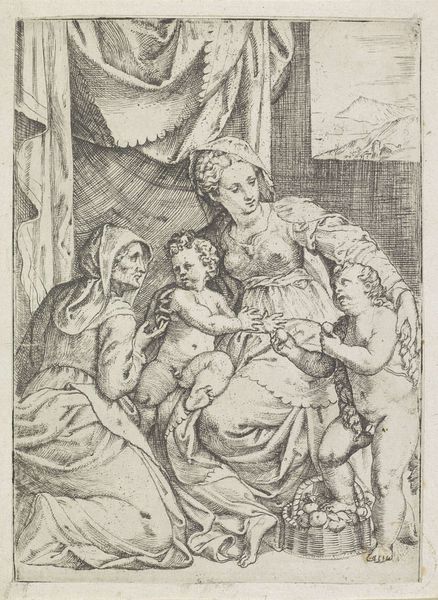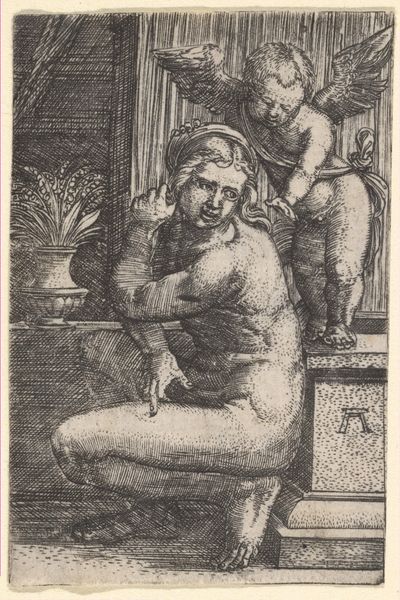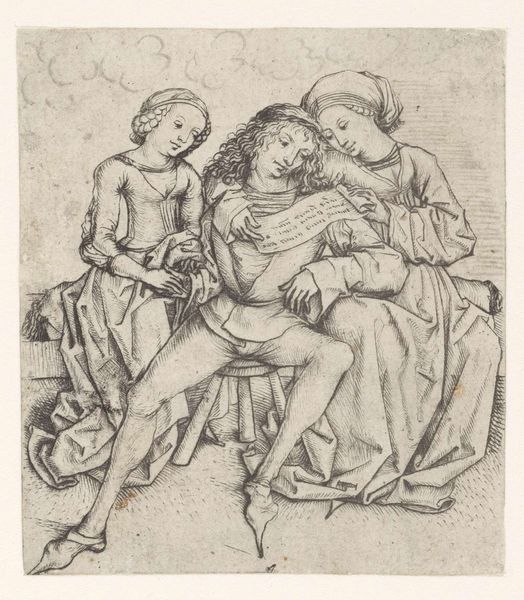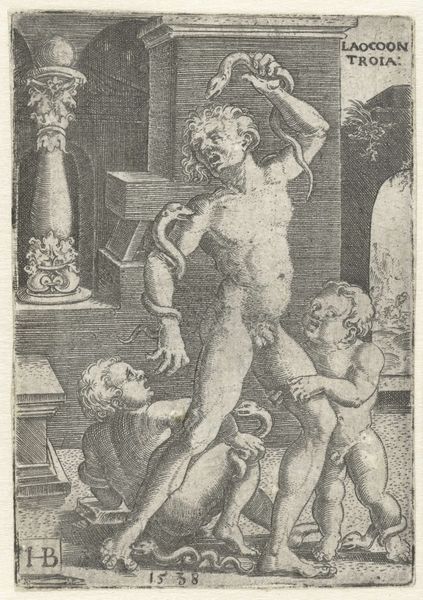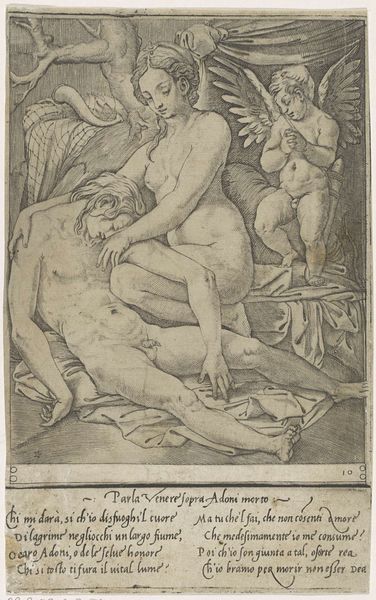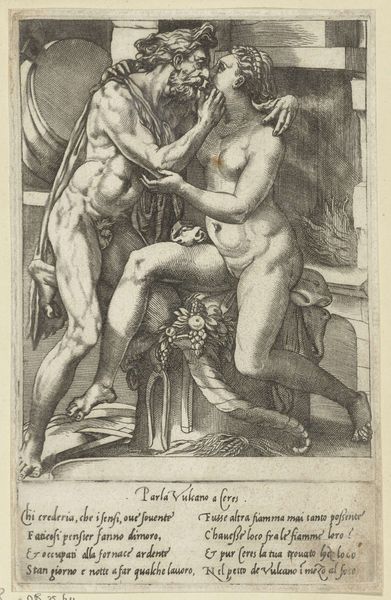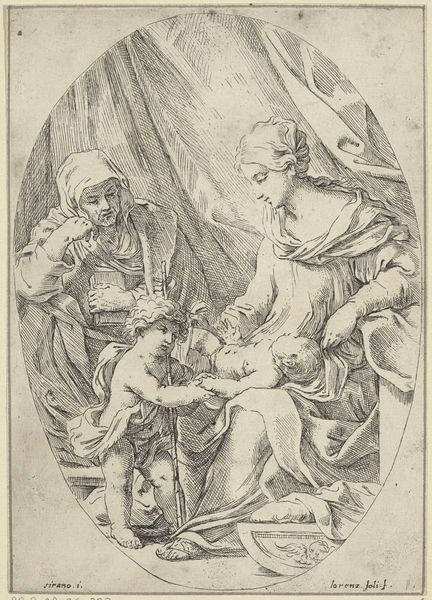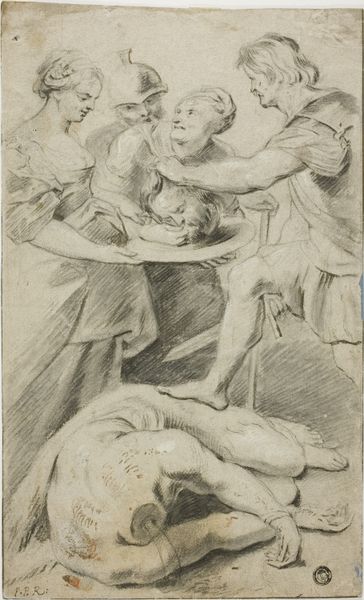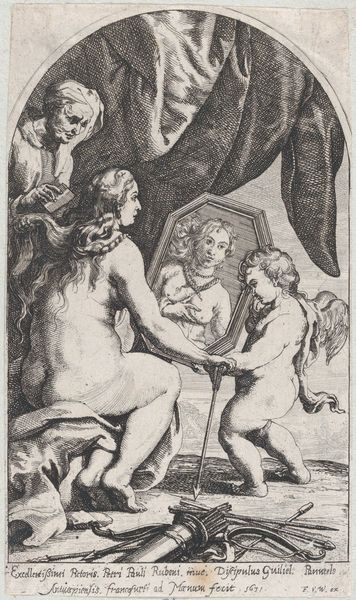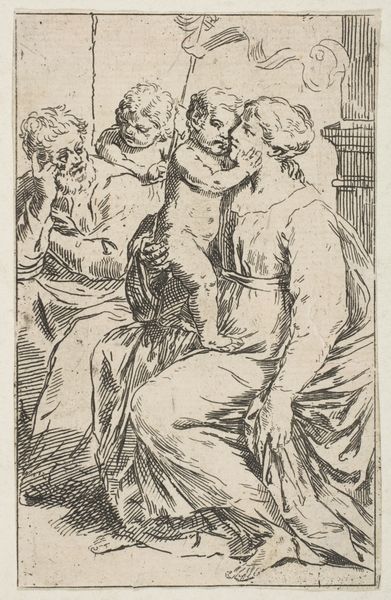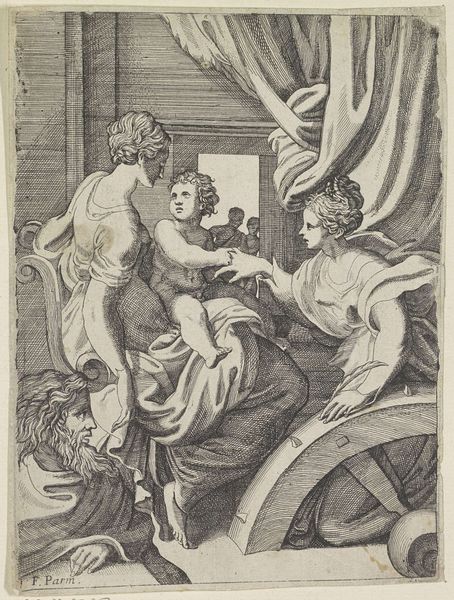
drawing, ink, pen
#
portrait
#
drawing
#
ink drawing
#
baroque
#
pen illustration
#
pen sketch
#
figuration
#
ink
#
pen
#
history-painting
Dimensions: height 122 mm, width 100 mm
Copyright: Rijks Museum: Open Domain
Curator: Here we have Gerard ter Borch’s drawing, “The Holy Family with Saint John the Baptist,” dating back to about 1616. What strikes you most about this piece? Editor: The sheer economy of the line! It’s a modest pen and ink drawing, yet Ter Borch conveys so much emotion and texture. Look at the varying weight of the lines; the hatching gives depth to the drapery, suggesting the tactile quality of the fabric. Curator: It's intriguing how Ter Borch employs this intimate, almost domestic setting to portray such a significant religious scene. This humanization was part of the broader Baroque shift toward engaging the viewer emotionally and promoting Counter-Reformation ideals through relatable imagery. Editor: Absolutely, and the materiality of the ink itself contributes. The brown ink would have been readily available, an everyday tool elevated to depict a scene laden with religious significance. Did the availability and cost of the materials shape Ter Borch’s work for particular audiences, maybe less wealthy patrons? Curator: It’s likely. Many artists had to consider material costs and patronage when deciding what to produce. In Ter Borch’s case, he aimed to create images accessible to different layers of society, fostering religious devotion among ordinary people while gaining favor in aristocratic circles. The use of drawing as a medium meant these images could easily circulate as studies, further broadening the impact of their message. Editor: Thinking about Ter Borch’s process, I wonder if this was preparatory work? Notice how the column in the background is barely there. There’s such looseness about the whole thing – but at the center the focus on the intimate embrace. The layering and cross-hatching creates that effect and allows our eye to rest on it. Curator: Yes, it's thought to be a study. You see Ter Borch grappling with composition here. The lines feel spontaneous. But the placement of each figure, from John the Baptist presenting a symbolic staff to the slightly receding form of Joseph looking over Mary’s shoulder, contributes to the visual dynamic. Editor: Seeing it through that lens really gives you a deeper sense of this drawing. Thank you. Curator: My pleasure. It's fascinating to delve into how art interacts with societal narratives.
Comments
No comments
Be the first to comment and join the conversation on the ultimate creative platform.
